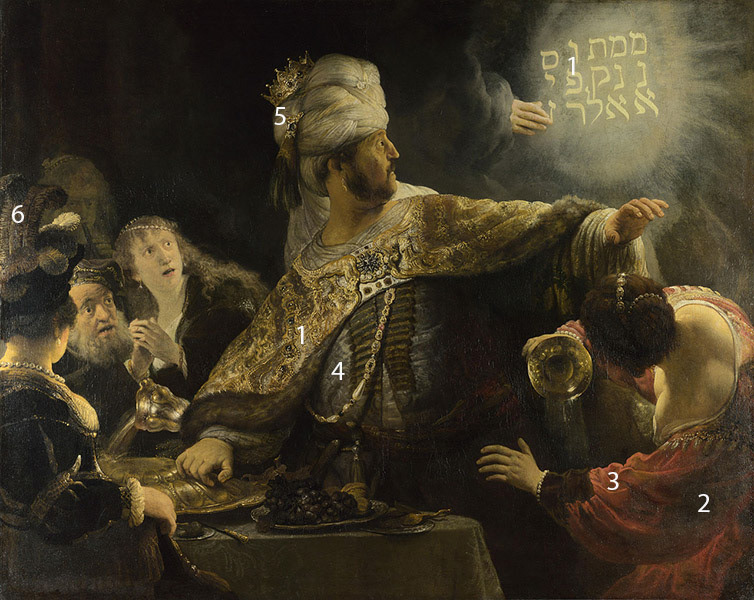
Rembrandt van Rijn, 'Belshazzar's Feast, 1636-38
Rembrandt painted this story from the Old Testament about the blasphemy of the Babylonian king Belshazzar and his punishment by God using an unusually rich choice of pigments. The dominant bright yellow colour of the writing on the wall and also of Belshazzar's cloak is painted in lead-tin-yellow. The complete pigment analysis, Belshazzar's story, videos and also paintings of the same story by other painters can be found at colourlex.com.

Johannes Vermeer, The Milkmaid, 1657-58
Vermeer was known for his copious use of the expensive pigment ultramarine in several of his paintings. The intensely blue tunic of the maid in 'The Milkmaid' contrasts nicely with the yellow upper garment painted in lead-tin-yellow. Learn more about the elaborate handling of paint in the back wall and in the brownish floor.
"In The Milkmaid, tactile and optical sensations coexist: nowhere else in Vermeer's oeuvre does one find such a sculptural figure and such seemingly tangible objects, and yet the future painter of luminous interiors has already arrived. As if conforming to the play between optical and tactile qualities throughout the picture, the pointillist pattern of bright dots on the bread and basket, Vermeer's most effusive use of the scheme, suggests scintillating daylight and rough textures at the same time." (1)
(1) Liedtke, W., "Johannes Vermeer (1632–1675) and The Milkmaid", In Heilbrunn Timeline of Art History, New York: The Metropolitan Museum of Art, 2000.

Diego Velázquez, Apollo in the Forge of Vulcan, 1629
Velázquez uses a limited choice of pigments to depict this antique myth of Apollo visiting Vulcan in his forge to tell him about his adulterous wife.

